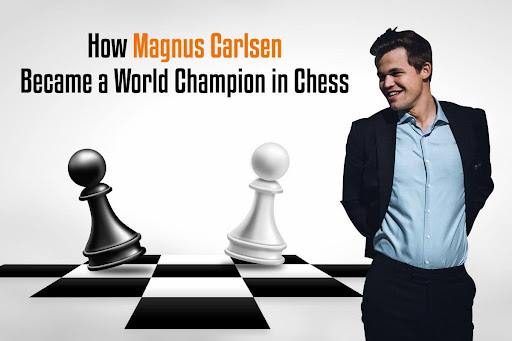How Magnus Carlsen Became a World Champion in Chess

Carlsen, the young player, defeated the world champion Viswanathan Anand and won the title just days before turning 23 years old and became quite a sensation in the world. This shy Norwegian boy has since stampeded the greats and dominated the global chess scenario.
Magnus has shown an immense commitment to the game of chess and maintained his position as a classic player despite facing some of the most tragic losses ever. His startling win in Chennai in 2013 by defeating the world champion from India made the news and even shocked some diehard Indian chess fans and impressed many with his clever display of unique gameplay. In light of his recent exploits in reclaiming several titles, he has inspired the new ‘online’ generation to download chess game and have a crack at becoming the next giant in chess-playing.
Let us see the facts for real how Magnus came to become one of the best and claimed the World Championship title for chess more than a few times.
The Win Against Viswanathan Anand
For his final in the World Champion of Chess, Magnus Carlsen had to face Viswanathan Anand, the grandmaster from India. At 13, Carlsen achieved the title of grandmaster, which readily foretold his future in the field. For the first time in 2013, he outclassed Viswanathan’s best moves and secured his position as a chess grandmaster. Not only was he able to achieve the feat once, but then he went on to defend the title consecutively for the next four times remaining on top as the best international chess player.
Immovable Focus
His style of playing is known to many as a game of focus. If you have observed Carlsen’s game, you will notice that the player never moves his eyes off the table. He is intrinsically engaged in what his rival is doing, and it seems his moves are played almost like second nature. In this form of atmosphere, it is evident that he notices all chinks in their armor and bends his moves accordingly to deliver the best results in the game.
Power of Memory
Carlsen is identified as a player of eidetic memory who can remember all that he sees and quickly packs up on the styles of the players with just a glance. In chess, remembering your player’s moves is a crucial way to identify what sort of game they are playing. From a young age, Magnus has trained himself to do that quite better than his peers, which gave him an edge over the competition and made him go for gold in the World Championship match.
The practice of remembering lets him record patterns that top players usually follow. He knows that all good plays come from great players in history, and therefore his aim has remained to know all so that he can always have one up over his rival player.
Instinctive Hunger
His hunger for the title has readily reduced over the years, as he has accepted in a recent interview, but he says that his desire to win was more when he was younger. When questioned, Carlsen has also accepted that he has become a player ready to win in any possible way.
According to him, his passion for being the top player was ingrained into him from the very early years of his life. When asked who would be his favorite player in the past years, Magnus quite cheekily answered that it would be himself when he was 23.
Recently Carlsen suffered a defeat to a kid genius of 13 years from India and seemed pretty bummed out by it. All this evidence suggests that Carlsen is a savage who never accepts defeat and tries most definitely to win in all situations.
His attitude at 31 is the same as when he was 23, which proves how dedicated he was when preparing for the first-ever world championship.
Stewing the Game
One distinctive strategy used by Carlsen in his plays is his desire to pull a draw in the game where he is about to lose. This method is widely acknowledged as stewing, and a player on the opposite side of the board gets very agitated when facing a player utilizing this strategy. This style adopted by Carlsen has been a method drawn from the old-age chess of 1850. In recent times this strategy is coming into play again, where young players are trying to end the game in a draw rather than attempting to make a win and risking a loss.
After Carlsen took down the likes of Viswanathan Anand using this strategy, he adopted this method very well to keep holding his position as one of the top chess players.
Not Focusing on His Chances
This is a neat trick learned by Carlsen much early on in the game where he chooses not to focus on his chances but rather see to it how the others are getting involved in their games. He devised the play for most of his matches and slowly climbed the ladder quite better than his contemporaries.
If you also observe his final against Viswanathan Anand, especially in Game 5. In that case, you will see that he held back in several cases where he had serious opportunities where he could take down his pieces but chose to play it safe and allowed Anand to take the offense first. This method reveals the opponent’s intentions and helps the player arrange future moves accordingly.
Final Words
Carlsen’s ability to gauge the tendency of his rivals is quite amazing, and he has a knack for playing against the player’s latent abilities. He is a quick judge of character and, since becoming a prodigy at an early stage, has held quite a position in the game for over a decade. His consistency is maintained by his ability to hold on in the most complex situations and taunt the opponent, which is a crucial part of Carlsen’s chess style. Only recently, Carlsen has shown a fall in form after losing to Viswanathan Anand in the Norway chess tournament. Here’s to hoping the champion rises to meet his level soon and shows the world who is boss.




